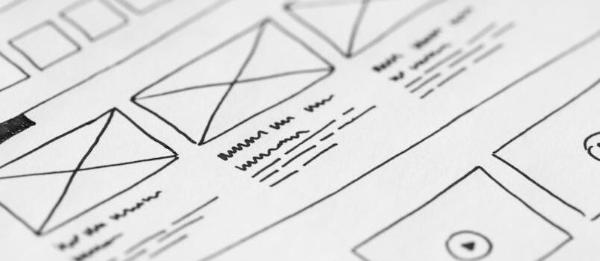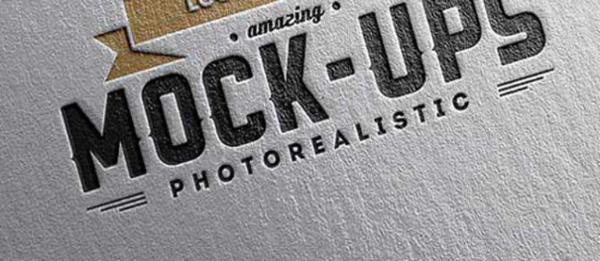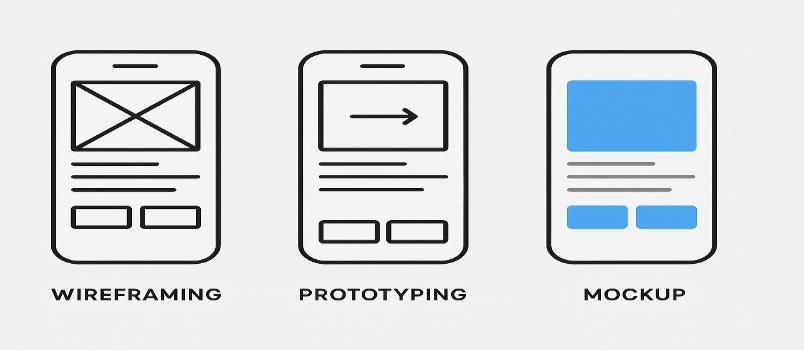In the world of digital design, the journey from initial concept to polished product follows a carefully structured path. Three pivotal stages in this journey—wireframing, prototyping, and mockuping—often get conflated or misunderstood, yet each serves a distinct purpose and offers unique value in the design process. Whether you’re a designer explaining your process to clients, a developer trying to understand design deliverables, or a product manager planning project timelines, understanding these distinctions can dramatically improve communication and workflow efficiency.
Wireframing: The Skeletal Framework
What Is Wireframing?
Wireframing represents the architectural blueprint of your digital product—a bare-bones structural outline that maps content placement and user flows without the distraction of visual design elements. Think of wireframes as the skeletal system of your design, revealing its fundamental structure without the muscles, skin, or personality that will eventually bring it to life.

Key Characteristics of Wireframes:
- Low Fidelity: Wireframes are intentionally basic, usually presented in grayscale with simple shapes and placeholder text.
- Focus on Structure: They emphasize information hierarchy, content placement, and space allocation.
- Quick to Create: Wireframes can be rapidly sketched on paper or created with simple digital tools.
- Easily Modifiable: Major structural changes can be implemented with minimal effort or resource expenditure.
- Content-Centric: They prioritize what goes where rather than how it looks.
When to Use Wireframes:
Wireframing excels in the earliest stages of the design process when core functionality and content organization are being defined. They’re ideal for initial stakeholder discussions because they don’t create premature attachment to specific visual elements. A wireframe says, “Here’s what this could do,” rather than “Here’s what this will look like.”
The beauty of wireframes lies in their deliberate simplicity. By stripping away all aesthetic considerations, they force everyone involved to focus on critical questions: Does the information flow logically? Is the navigation intuitive? Is the functionality complete? Wireframes create a space where structural decisions can be made without the emotional complications that visual design inevitably introduces.
Mockups: The Visual Representation
What Is a Mockup?
While wireframes map structure, mockups bring visual identity to the forefront. A mockup is a static, high-fidelity visual representation that showcases the aesthetic direction of the final product—including colors, typography, imagery, and other visual elements. If wireframes are the skeleton, mockups are the fully formed exterior appearance without the internal workings.

Key Characteristics of Mockups:
- High Visual Fidelity: Mockups present a pixel-perfect representation of how the final product will look.
- Static Nature: Unlike prototypes, mockups don’t incorporate interactive elements or functionality.
- Brand Alignment: They implement brand guidelines, visual identity, and aesthetic choices.
- Detailed Visual Elements: They include proper typography, imagery, color schemes, and visual design treatments.
- Marketing Value: Mockups can often double as marketing materials for presentations or promotional purposes.
When to Use Mockups:
Mockups shine when visual design decisions need approval or when stakeholders need to envision the final aesthetic without getting lost in functional details. They’re particularly valuable for gaining buy-in from executive teams or clients who may respond more intuitively to visual presentations than to structural discussions.
The creation of mockups represents a significant commitment to a design direction. Because they require considerable time and skill to produce, they’re most effective after fundamental structural decisions have been validated through wireframing. Creating mockups prematurely can lead to the “sunk cost fallacy,” where teams become reluctant to make necessary structural changes because of the effort invested in visual design.
Prototyping: The Functional Simulation
What Is a Prototype?
If wireframes provide structure and mockups provide appearance, prototypes introduce behavior. A prototype is an interactive simulation of the product experience that allows users to navigate through the design and experience its functionality firsthand. Prototypes can vary dramatically in fidelity, from simple clickable wireframes to nearly fully-functional applications.

Key Characteristics of Prototypes:
- Interactive Elements: Prototypes respond to user inputs and simulate actual functionality.
- Variable Fidelity: They can range from low-fidelity clickable wireframes to high-fidelity interactive experiences.
- User Testing Value: Prototypes enable observation of how users naturally interact with the design.
- Experiential Understanding: They provide a sense of flow and interaction that static designs cannot convey.
- Technical Feasibility Testing: Complex interactions can be validated before development begins.
When to Use Prototypes:
Prototyping becomes essential when understanding user flow and interaction is critical. They’re invaluable for user testing, as they allow observation of actual behavior rather than relying on users to imagine how they might interact with a static design. Prototypes answer questions that static designs cannot: How does this feel to use? Where do users get confused? What expectations do certain interactions create?
The flexible fidelity of prototypes makes them particularly versatile. A low-fidelity prototype might be created early in the process to validate navigation patterns, while a high-fidelity prototype might later be used to fine-tune specific interactions or animations. The level of fidelity should always match the specific questions being investigated.
The Continuum of Design Fidelity
Rather than viewing wireframes, mockups, and prototypes as entirely separate entities, it’s helpful to understand them as points along a continuum of fidelity. This continuum moves from low fidelity (abstract, structural) to high fidelity (concrete, specific) across two key dimensions:
- Visual Fidelity: How closely the design represents the final visual appearance
- Functional Fidelity: How closely the design simulates the final user experience
This creates a matrix where various design artifacts can be placed:
- Low Visual/Low Functional: Paper sketches, basic wireframes
- Low Visual/High Functional: Interactive wireframes, functional prototypes with minimal styling
- High Visual/Low Functional: Static mockups, visual comps
- High Visual/High Functional: High-fidelity interactive prototypes
Understanding this matrix helps teams choose the appropriate design deliverable for each situation, balancing the time investment against the specific insights needed.
Integrating the Methodologies: A Strategic Approach
The most effective design processes don’t treat wireframing, mockuping, and prototyping as isolated phases but as complementary tools that can overlap and integrate. Consider these strategic approaches:
The Traditional Waterfall
The classic progression moves sequentially:
- Wireframes establish structure and layout
- Mockups define visual appearance
- Prototypes validate interaction and flow
This approach minimizes rework but can delay the discovery of interaction problems until significant visual design work has been completed.
The Parallel Track
In this approach, different aspects of the design evolve simultaneously:
- Structural wireframes for content organization
- Style tiles or mood boards for visual direction
- Interaction prototypes for critical user flows
Teams can then synthesize insights from each track before committing to comprehensive high-fidelity designs.
The Spiral Model
This iterative approach repeatedly cycles through lower-fidelity to higher-fidelity versions of the design:
- Rough wireframes → Basic prototype → User feedback
- Refined wireframes → Visual styling → Enhanced prototype → User feedback
- Detailed mockups → Comprehensive prototype → Final validation
Each cycle increases in fidelity while incorporating learnings from previous rounds.
Choosing the Right Tool for the Job
The selection between wireframing, mockuping, and prototyping should be guided by specific project needs rather than rigid methodological allegiance. Consider these factors:
Project Constraints
- Timeline: Tight deadlines may favor wireframes and low-fidelity prototypes over detailed mockups.
- Budget: Limited resources might necessitate focusing on either visual polish or functional validation.
- Team Expertise: Available skills may influence which methodologies are practical to implement.
Decision-Making Requirements
- Technical Feasibility: Complex interactions may require prototyping to validate technical assumptions.
- Stakeholder Approval: Visual-oriented stakeholders might need high-fidelity mockups for meaningful feedback.
- User Research Goals: Testing navigation may require only wireframe-based prototypes, while testing emotional response may require high-visual fidelity.
Conclusion: Balanced Design Evolution
The distinctions between wireframing, mockuping, and prototyping reflect the multifaceted nature of design itself—balancing structure, appearance, and behavior. By understanding the unique value and appropriate application of each methodology, design teams can craft more efficient processes and more effective final products.
The most successful design processes aren’t those that rigidly adhere to particular methodologies but those that thoughtfully select and combine approaches based on specific project needs. The goal isn’t to follow a prescribed path but to minimize unnecessary work while maximizing meaningful insight at each stage of the design journey.
In an increasingly complex digital landscape, mastering this strategic selection of design methodologies isn’t just a technical skill—it’s a competitive advantage that allows teams to create better products with greater efficiency and confidence.


